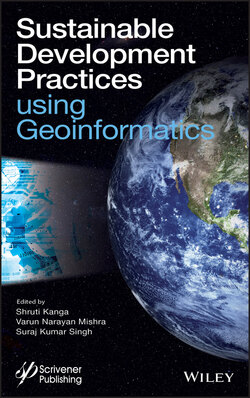Читать книгу Sustainable Development Practices Using Geoinformatics - Группа авторов - Страница 35
2.4.2 Thematic Layers of SVI
ОглавлениеVulnerability is designated as the susceptibility to stress or hazards and the capacity (or lack thereof) to prepare, cope, and recover from any hazardous event, and it expresses between scale 0 (no loss) to 1 (total loss) or as a percentage. The vulnerability also represents the degree to which a socio-economic system or physical assets is either susceptible or resilient to the impact of natural hazards [21, 31]. Selection of vulnerability indicators is directly relevant to the local study context and the particular hazards [32]. The South Karanpura coalfield is one of the major producers of sub-bituminous coal in India. There are various coal-based large (power and steel plants) and small-scale industries (sponge iron, bricks manufacturing, etc.) present in the area that may cause a serious impact on the health of the residents and environment. Therefore, to evaluate the risk due to geo-environmental hazards, understanding of socio-economic conditions of the population is of prime importance. Keeping the above point in view, the PD, total worker (TW), children below ages (0–6), and literacy rate (LR) are considered important societal elements for geo-environmental hazards and risk analysis in the South Karanpura coal mining region.
Table 2.1 Area statistics of various LU/LC classes over study area.
| Land use/land cover classes | Area (km2) | % Area |
|---|---|---|
| Built-up land | 40.24 | 10.56 |
| Coalmining area | 16.59 | 4.35 |
| Cropland/fallowland | 72.97 | 19.15 |
| Forest | 132.02 | 34.65 |
| Industrial settlement | 13.80 | 3.62 |
| Wasteland | 85.90 | 22.55 |
| Water body within coal mine | 3.12 | 0.82 |
| Water body/river/reservoir | 16.36 | 4.29 |
| Total | 381.00 | 100.00 |
